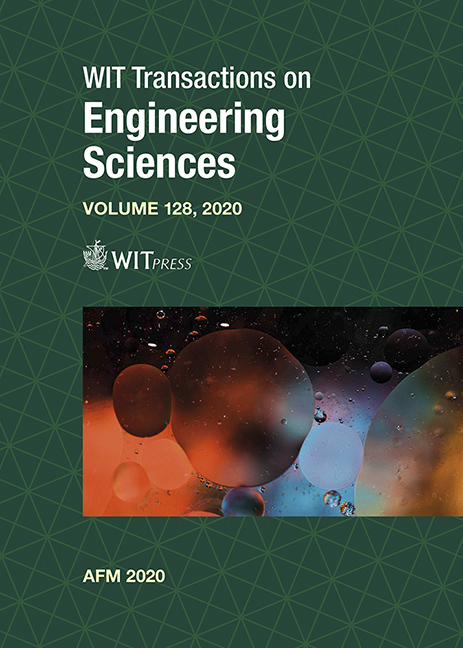NUMERICAL STUDY OF THE MICROSTRUCTURE OF A DILUTE SUSPENSION TO ASSESS ITS THIXOTROPIC BEHAVIOR BY A TWO-WAY COUPLING SCHEME
Price
Free (open access)
Transaction
Volume
128
Pages
12
Page Range
47 - 58
Published
2020
Paper DOI
10.2495/AFM200051
Copyright
WIT Press
Author(s)
TOMOHIRO FUKUI, MISA KAWAGUCHI, KOJI MORINISHI
Abstract
It is important to comprehend the microstructure of a suspension in a pressure-driven flow to control its rheological properties. The microstructure is usually assessed based on spatial arrangement of the particles, i.e., how suspended particles flow in a channel. The spatial patterns in the width direction rather than those in the axial one are more important because near-wall particles may increase the equivalent intrinsic viscosity significantly. The viscous dissipation near the channel wall, which is directly related to the pressure drop, depends on how and where suspended particles flow in a channel. A thixotropic behavior of a suspension is partly due to these microstructure changes; however, it has not been completely clarified yet. Therefore, the aim of this study is to consider microstructure changes of a dilute suspension attributed to the inertial effects of the suspended particles, and its accompanying macroscopic rheology changes by a two-way coupling scheme. Pressure-driven suspension flow simulations were conducted by regularized lattice Boltzmann method. A periodic boundary condition was applied in the axial direction of the channel to reduce computational costs. The suspended particles were assumed to be rigid, neutrally buoyant, and chemically stable. The flow simulations were then performed by up to 100 nondimensional time to consider temporal changes in the microstructure. As a result, the microstructure of a suspension was observed to change in time mainly due to inertial effects of the suspended particles. The thixotropic behavior of a dilute suspension due to inertial effects was successfully reproduced by considering changes in its microstructure.
Keywords
rheology, non-Newtonian property, thixotropy, particle migration, dilute suspension, two-way coupling simulation





